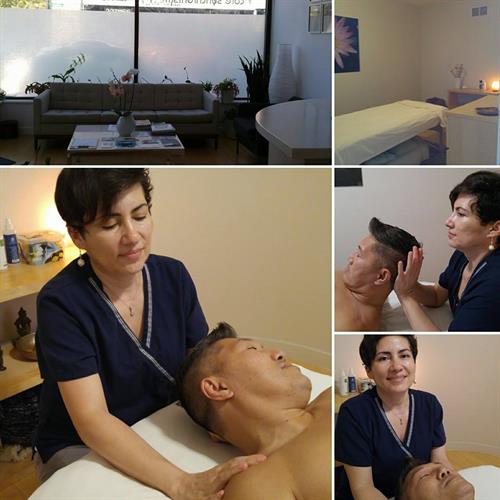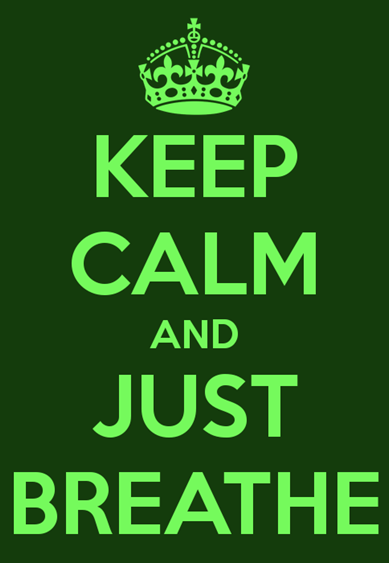I mean, it’s just breathing right? It’s so much more than that. What should be happening when your breathing right:
- Your throat neck and traps should be minimally or not involved in breathing. We want breathing to come from trunk, not your face.
- If you are using accessory muscles to breathe, they’re not being used to do whatever they are supposed to be doing
- Proper breathing causes an autonomic shift towards a parasympathetic state. This will allow you to get better results from exercise, increased brain function, and more enjoyment out of life.
- If you are holding a position, you should be able to take a deep breath and maintain that position without shaking, moving, or seeing anything move except for your belly and ribcage.
- Breathing can help align your body into a good starting posture.
- Breathing is so much more.
What Stress can do to breathing. Hyperventilation or over-breathing (“fight or flight”)
Some people tend to hyperventilate (or over-breathe) when stressed. They breathe faster and deeper than they need to. This is part of the “fight or flight” response. They’re actually breathing too much rather than not enough. This may be more obvious for some and subtle for others. Doing this can cause symptoms such as light headedness, dizziness, headache and numbness or tingling in the hands, feet and lips. Although someone who is hyperventilating feels that they can’t get enough air, they usually have normal levels of oxygen in their blood.
The problem with this is that hyperventilation causes you to breathe out more carbon dioxide than your body produces. This reduces the carbon dioxide in the blood below its normal level. This increases the pH level of your blood, which triggers the constriction of blood vessels, and thus reduces blood flow to your brain and other organs. Because the blood is flowing through narrower blood vessels, it takes longer to bring oxygen to where it’s needed, making you feel like you’re not getting enough oxygen, even though it’s abundant in your bloodstream. Since you feel like you’re not getting enough oxygen, you’re going to want to breathe even faster and deeper to supply more oxygen. Doing this, you will be breathing out even more carbon dioxide, making your blood vessels constrict even more, and feeling even worse.
1
Tension and restricted breathing (“freeze or faint”)
Stress can also cause some people to tense up and take shallower breaths, and sometimes even to hold their breath. This is part of the “freeze or faint” response which could help people to hide when in danger. Such restricted breathing limits the amount of oxygen that you take in, and can reduce the amount of oxygen in your blood. Therefore, your heart has to work harder to pump more blood to all your organs and tissues to supply them with oxygen. The reduced amounts of oxygen in your blood can cause similar symptoms as caused by over-breathing: lightheadedness, dizziness, headache and numbness or tingling in the hands, feet and lips.
How does it effect muscle strength. The Diaphragm and its global relationships
The diaphragm, being a centrally located muscle can become overburden, its effects can be felt throughout the entire body. There are many reasons why the diaphragm becomes overworked. One of these is emotional stress which causes the diaphragm to contract. Another is poor breathing habits,this results in chest breathing. The diaphragm with its connections to your upper body is considered a core muscle. It is also connected to the jaw muscles, abdominal, and the pelvic floor and will contribute to their dysfunction.
How does it effect hormonal imbalance. If you have been stuck in a state of chronic stress, you will very likely have symptoms of chronic subconscious hyperventilation (caused by stress).
- Shortness of breath, feeling out of breath (60.2%)
- Constant air hunger
- Frequent gasps or sighs
- Asthma / Bronchitis
- These are some of the signs and symptoms of adrenal fatigue
A basic breathing technique
A basic technique you could use to counteract both of the above problems, and to trigger the relaxation response, includes the following three steps:
1. Focus your mind on your breath (and repeatedly re-focus when you get distracted again)
2. Slow down your breath by counting how long it takes to breathe in and out, and by extending your count every few breaths. (you may start with in-1, 2, 3, out-1, 2, 3, pause-1, 2… then add a count to each, breathe at this pace for a little while, until comfortable with this pace, then add another count, etc.
3. Continue for a few minutes of mindful, slow, deep, relaxed breathing. Relax your muscles too while you’re at it.
I have used both the one above and the Alternate Nostril Breathing Technique with good results. I hope I have given you an awareness and you become mindful of your breathing and consider sharing. Thanks Mara
References:
The pathophysiology of hyperventilation syndrome
The effects of hyperventilation on postural control mechanisms
A controlled study of a breathing therapy for treatment of hyperventilation syndrome.

